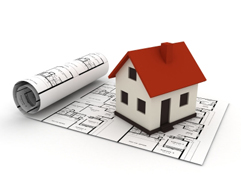Planning
The planning authority for our area is the South Downs National Park (SDNP) based in Midhurst, and they will determine any planning applications submitted in respect of East Dean & Friston Parish Council (ie East Dean, Friston, Birling Gap, and Crowlink).
 The ED&F Parish Council is a statutory consultee which means that any planning application submitted to SDNP will be referred to us for comment. Our views carry weight as we are the ‘voice on the ground’ but although the SDNP are obliged to take account of our views they are not obliged to accept them.
The ED&F Parish Council is a statutory consultee which means that any planning application submitted to SDNP will be referred to us for comment. Our views carry weight as we are the ‘voice on the ground’ but although the SDNP are obliged to take account of our views they are not obliged to accept them.
The Parish Council has delegated authority to its Planning Committee and this meets on the third Tuesday of each month to consider planning applications and consider other issues referred to it by the Council. As with all Council and Committee meetings the public are very welcome to attend and comment on items on the meeting agenda in the public session which is held at the start of every meeting. The Committee will consider applications and decide to have no objection, object giving reasons, or submit a conditional no objection suggesting what other factors need to be taken into account.
| Satellite Dishes - see below |
The Terms of Reference of the Planning Committee are in the council’s on-line library.
Planning Committee Agendas are posted on the Council's noticeboard in Downlands Way and on this website a few days before the next meeting. Minutes of the Planning Committee (as with Council and other Committees) are held on the Council website for three years.
If you are thinking of making alterations to your property or submitting a planning application, you should consider the following:-
A) Village Design Statement – this is a user-friendly document that describes the existing essential character of our village(s) and provides advice on future development. It was prepared by a working group within the village to help promote local distinctiveness and sense of place in new design proposals in order that any planned development approved by the SDNPA is in harmony with its setting and makes a positive contribution to the local environment. The VDS has been reviewed and accepted by the SDNP and is therefore now a Supplementary Planning Document (SPD) which gives the VDS the weight of a formal planning policy. The VDS is held in the ON-LINE LIBRARY.
B) Material Considerations
| The SDNP are only allowed to take material planning considerations into account when considering comments. |
There are many material considerations but the most
common include:-
- Loss of light/overshadowing
- Overlooking/loss of privacy
- Visual amenity (but not loss of view)
- Adequacy of parking/loading/turning
- Highway safety / Traffic generation / Road access
- Smells, Noise and disturbance resulting from use
- Hazardous materials
- Loss of trees
- Effect on listed building and conservation area
- Layout and density of building
- Design, appearance and materials
- Landscaping
- Local, strategic, regional and national planning policies,
- Proposals in the Development Plan
- Government circulars, orders and statutory instruments
- Disabled persons’ accessibility
- Compensation and awards of costs against the Council at public enquiries
- Previous planning / appeal decisions
- Nature conservation
- Archaeology
| The following are NOT considered to be valid planning concerns:-
- Affect on property value
- The loss of view
- The impact of construction work or competition between firms
- Restrictive covenants
- Boundary, access matters or ownerships disputes
- Personal moral issues or opinion of the applicant
|
C) Planning Portal – a user friendly website which provides guidance and advice on planning matters. The Portal is the online planning and building regulations resource for England and Wales and includes helpful interacative guides.
D) South Downs National Park (Planning section) this contains a number of helpful pages including Do I need Planning Permission, Planning Advice, and Making a Planning Application.